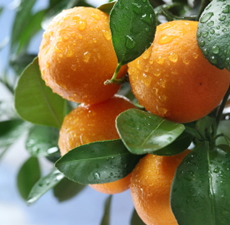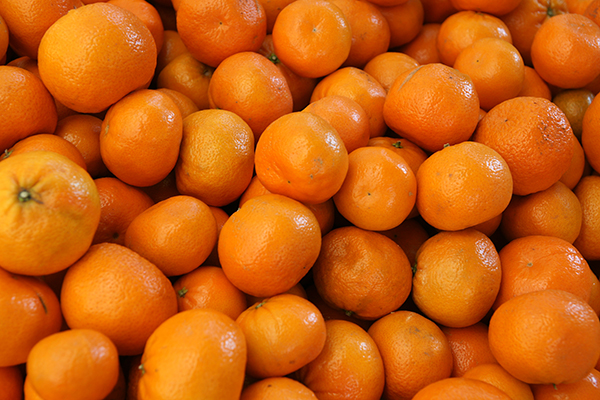|
Salvestrols research focuses on cancer detection and monitoring THE SALVESTROL Concept is firmly based on extensive scientific research, spanning a period of more than 10 years. In the early 1990s a group of researchers in Aberdeen led by Professor Dan Burke found that a certain enzyme protein – CYP1B1 (sippy1B1) – was clearly present in the tumour cells of a wide variety of cancers, but was undetectable in healthy cells of the corresponding tissues. Since this early research other international researchers have discovered this enzyme in other cancers that were not originally tested. So CYP1B1, which is one form of the extensive cytochrome P450 enzyme family, is increasingly being recognised in published research papers to be a universal tumour marker. Since CYP1B1 is virtually exclusive to cancer cells, its mere presence in a person is indicative that cancer resides in them somewhere. |
|
Co-discoverer of salvestrol Prof Burke explains in a one hour video the effects and mechanism of the cancer killing properties of salvestrol. |
|
Nutrition and Cancer: Salvestrol Case Studies Salvestrols are a class of phytonutrients that, in humans, are metabolised by the tumour- specific CYP1B1 enzyme in cancer cells to initiate a cascade of processes, including apoptosis, that result in the arrest or decline of the cancer. In this way Salvestrols are natural prodrugs as their activity hinges on activation by CYP1B1. |
|
Nutrition and Cancer: Further Case Studies Involving Salvestrol Abstract: A nutritional approach to the treatment of cancer can provide great benefit to patients. The nutritional approach focused on through these cases addresses deficiencies in dietary phytonutrients known as Salvestrols along with their co-factors. Salvestrols operate through a highly targeted mechanism that hinges on their metabolism by the universal cancer marker CYP1B1. This results in a very broadly applicable method in addressing a nutritional deficiency to the benefit of patients. Unfortunately modern farming practices have severely limited the availability of these specific phytonutrients in the modern diet. These phytonutrients are all phytoalexins and are not induced in abundance until the plant comes under attack from infection or predation. Six cases of recovery from cancer using this nutritional approach are discussed. To illustrate the breadth of this approach cases are presented representing five diverse cancers: breast; prostate; colon; liver; and Hodgkin’s lymphoma. Two of the cases show how rapid and dramatic the improvement can be when nutritional deficits are addressed. |
|
Cancer and Related Case Studies Involving Salvestrol and CYP1B1 Abstract: Salvestrols are naturally occurring, metabolically active substances that act as anticancer prodrugs when metabolically activated by the Cytochrome P450 enzyme, CYP1B1. They are phytoalexins and as such are induced in response to pathogens. As phytoalexins they do not fall neatly into any of the classes of phytonutrients. Some are stilbenes, some are antioxidants, some are phytoestrogens while others fall outside of these categories. Salvestrols obtain their anticancer activity not as a member of some phytonutrient class but rather through their metabolism by CYP1B1. Unfortunately, Salvestrols are deficient in western diets due to the modern agricultural practices that minimize the risk of predation through the use of fungicides with the consequence of minimizing the conditions for induction of these compounds. It is in organically grown foods that salvestrol levels are highest. To illustrate the breadth of a nutritional approach to cancer treatment using Salvestrols, cases are presented here that cover stage 1 breast cancer, squamous cell carcinoma of the anus, chronic lymphocytic leukaemia, primary peritoneal carcinoma and a case of benign prostatic hyperplasia. Four of these cases highlight how rapidly one can recover once nutritional deficits are addressed without recourse to conventional treatment. |
|
Early CancerDetection Many of you will be familiar with salvestrols – there is an article in the current issue of JOM. The basic story line is that salvestrols are food‐based, secondary plant metabolites that have a specific functional relationship to a cytochrome p450 enzyme called CYP1B1. CYP1B1 is a unique cytochrome p450 in that it doesn’t occur in healthy tissue – it only occurs in cancer cells. It is also unique in that it is a universal cancer marker occurring in every cancer tested. What the team discovered is that salvestrols work as natural prodrugs. They are exceptionally stable and non‐reactive compounds that bind with CYP1B1. The metabolism that results from this binding produces a metabolite that induces apoptosisin the cancer cell. Thisisthe basic discovery of the research team in Leicester, England |
|
Ginko upregulates CYP1B1 expression in breast cancer cells. |
|
oh rly? "They set out to understand how the Sir2 gene reduces aging in Saccharomyces cerevisiae. Sir2 genes shot to prominence as potential human anti-aging genes with the finding that resveratrol, a component of red wine, activates them. However, subsequent research has found that resveratrol doesn’t extend lifespan in mammals." Maybe yeast dies of cancer. Maybe aging is very slow cancer. |
|
Anti-cancer activities of cytokinin ribosides
Cytokinins are plant hormones and play essential roles in regulating plant growth and development. They also have diverse pharmacological effects in animals and humans. Whereas cytokinin bases have been studied mainly for their cytoprotective activities, cytokinin ribosides have been explored as anti-cancer agents. Cytokinin ribosides inhibit growth or cause apoptosis in various cell lines derived from diverse malignancies including those with a mutant p53 gene. Activity against cancer stem cells, anti-angiogenic activity, and the ability to stimulate an immune response to malignant cells have been reported as well. There are also positive results from in vivo studies and reports of activity in patients with hematological malignancies and solid tumors. Here, we review studies of the anti-cancer activity of cytokinin ribosides since the 1960s and comment on the issues that need to be addressed for the further development of cytokinin ribosides into anti-cancer drugs. |



